What is the Best Fabric to Make Baby Bibs? A Beginner’s Guide
Baby bibs are one of the easiest sewing project you can learn to make, not to mention that they are super useful! But with all the options out there, what kind of fabric is best for baby bibs? This guide will help you decide which one you should use.
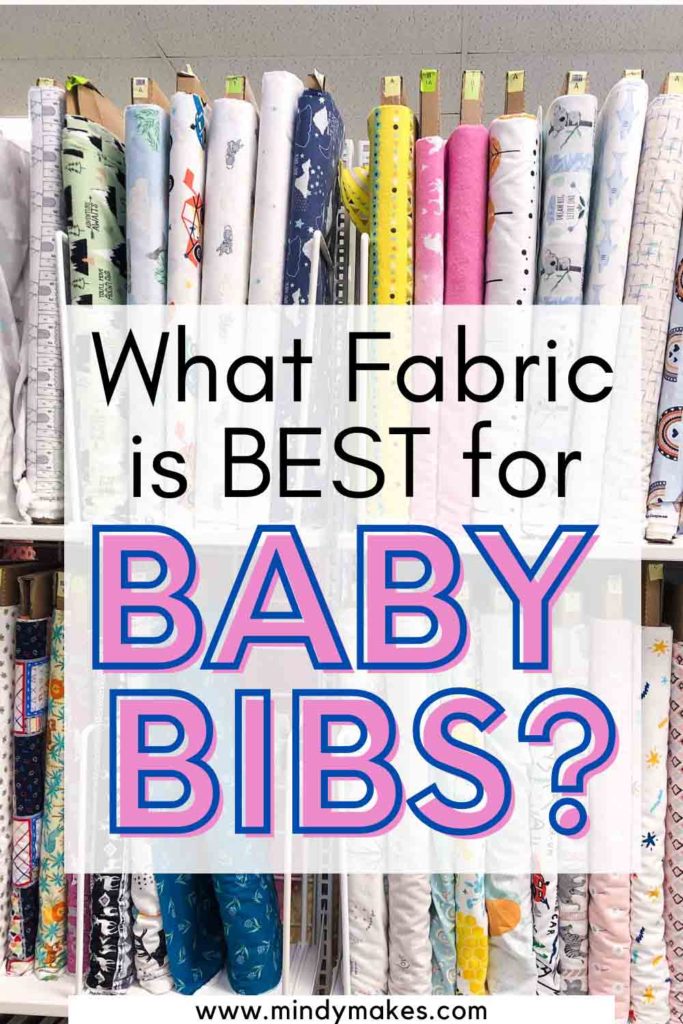
TABLE OF CONTENT
What Fabric is Best for Baby Bibs?
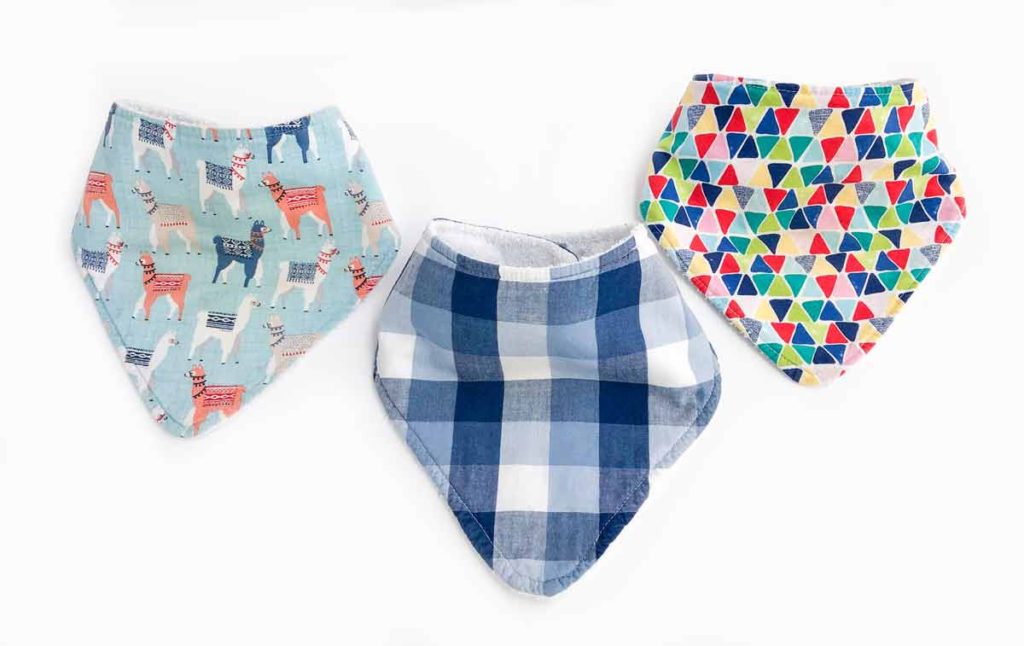
There are SO MANY options when it comes down to what kind of fabric to use for baby bibs. Generally speaking, you want a fabric that’s soft, absorbent, and can stand up under repeated washings. Since cloth bibs are made using 2-3 layers of fabric, you can easily mix and match different fabric types to make one that is suitable for your little one.
Fabric Choices for Top Layer of Baby Bibs
100% Cotton
100% cotton is probably the most popular option for DIY baby bibs! It’s comfortable, soft, absorbent and machine-washable. Also, cotton fabrics have good strength and retain their color even with repeated washings. This is great as bibs undergo so many washings and you also don’t want your bib color and print to fade over time.
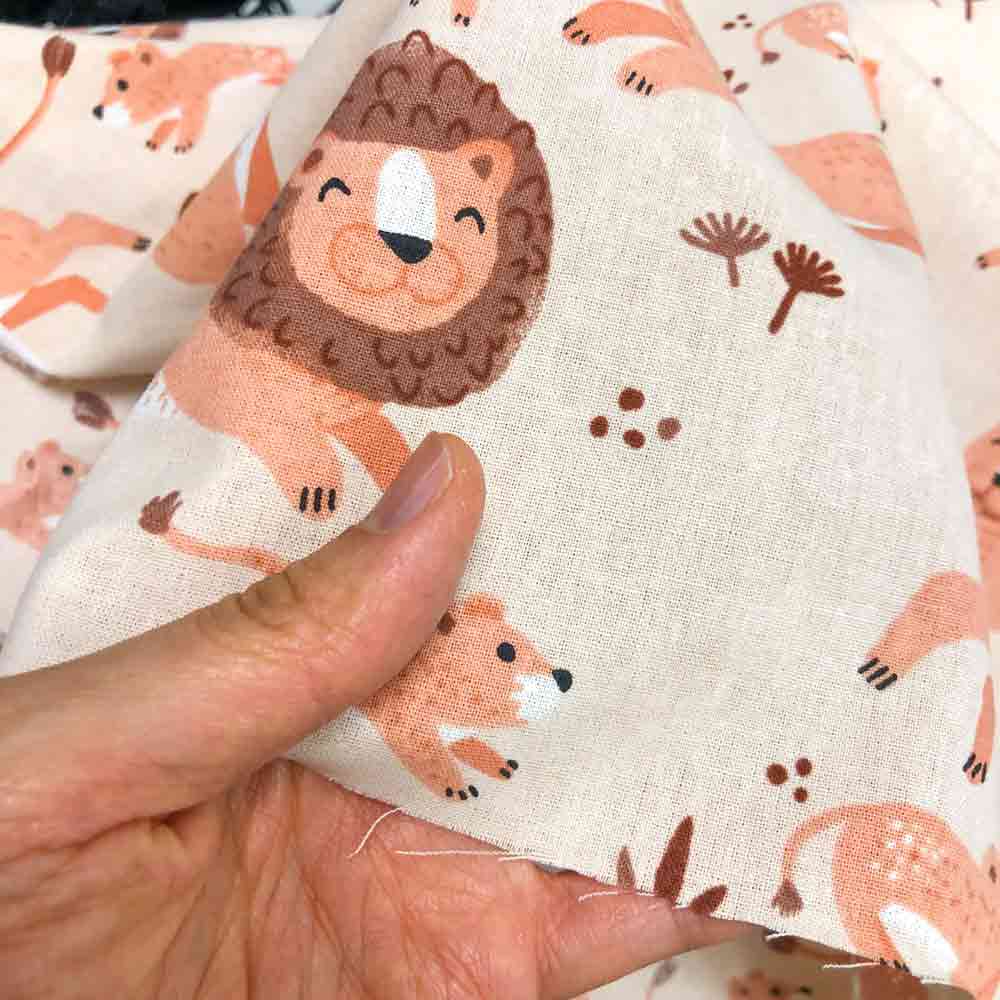
100% Cotton Print Fabric
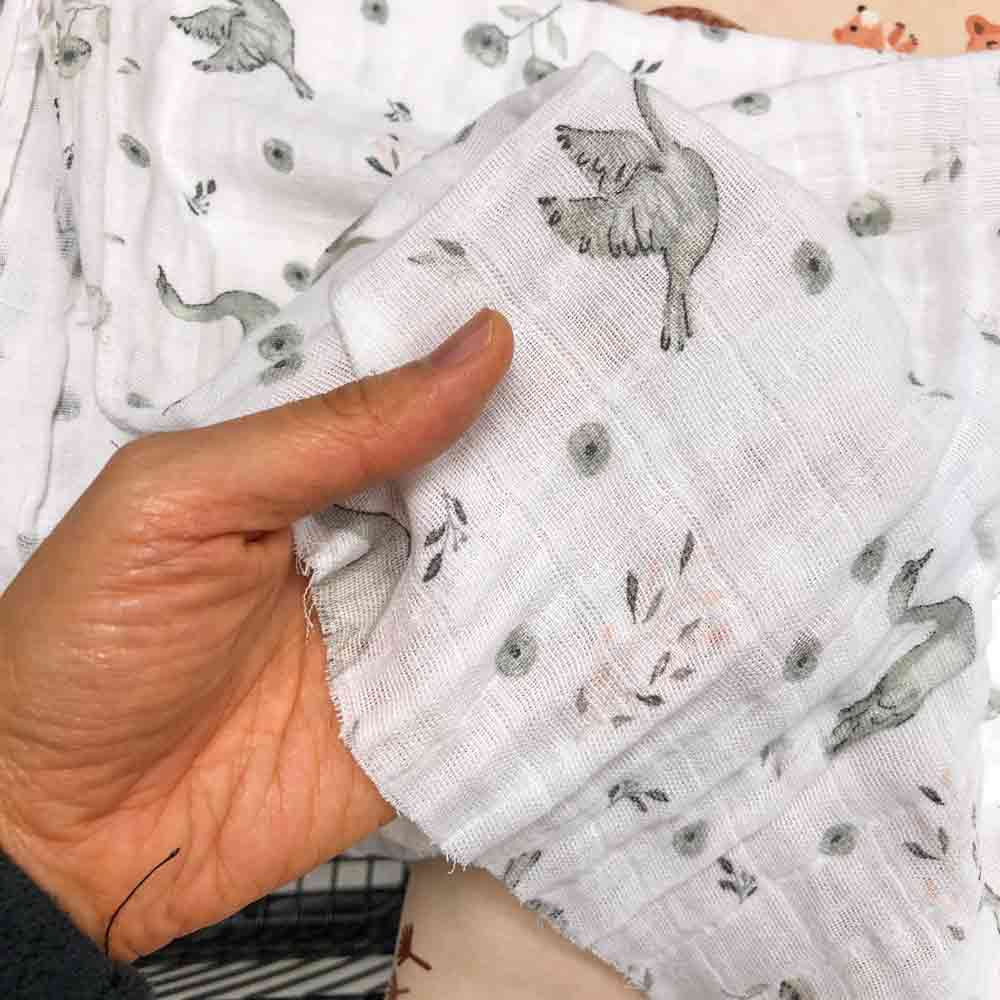
100% Cotton Swaddle Fabric. Note how it’s more see-through compared to the 100% Cotton Print. This fabric is ultra soft and breathable.
On top of that, cotton fabrics are readily available in all fabric stores and comes in all types of prints and solids. This makes it easy to find a design or color that matches your baby’s clothes or outfit.
Cotton fabric is also easy fabric to sew. Thus I highly recommend this fabric for my beginner sewists.
One downside is that cotton fabrics tends to wrinkle easily in the wash. If you have a wrinkle care cycle in your dryer that will help. Otherwise a quick press will easily solve this problem.
Nevertheless, 100% cotton is still one of my top fabric choices for making bibs!
Flannel
Flannel a soft, medium-weight fabric that has a fuzzy finish on one or both sides. The “fuzziness” of flannel is created by brushing a metal brush over the fabric to lift some of the fibers up to create an even softer feel.
It’s a very cozy fabric that is comfortable and warm. This makes flannel bibs perfect for winters and cold weather.
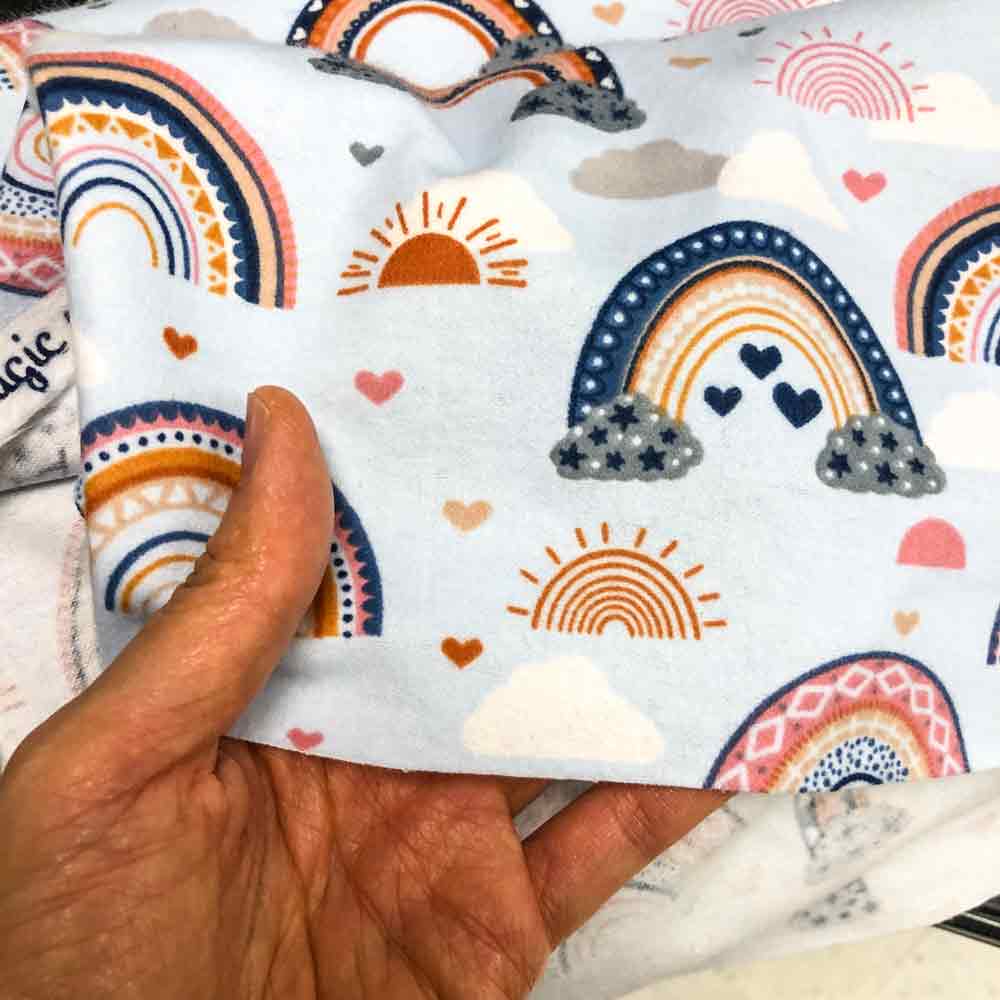
100% Cotton Flannel Print. It’s difficult to see in the photo, but the surface has been treated with a metal brush to raise the fine fibers. This makes flannel even softer to the touch
Flannel fabrics are made with either cotton, cotton-blend, wool, or synthetics. When choosing a flannel for bibs, go for the ones that are 100% cotton. I would stay away from anything with wool, especially if you want to wash your bibs in a hot or warm cycle. Wool shrinks like crazy in hot water!
Another great thing about 100% cotton flannel is that they are readily available in an assortment of colors and cute prints, making it easy to match your baby’s outfit.
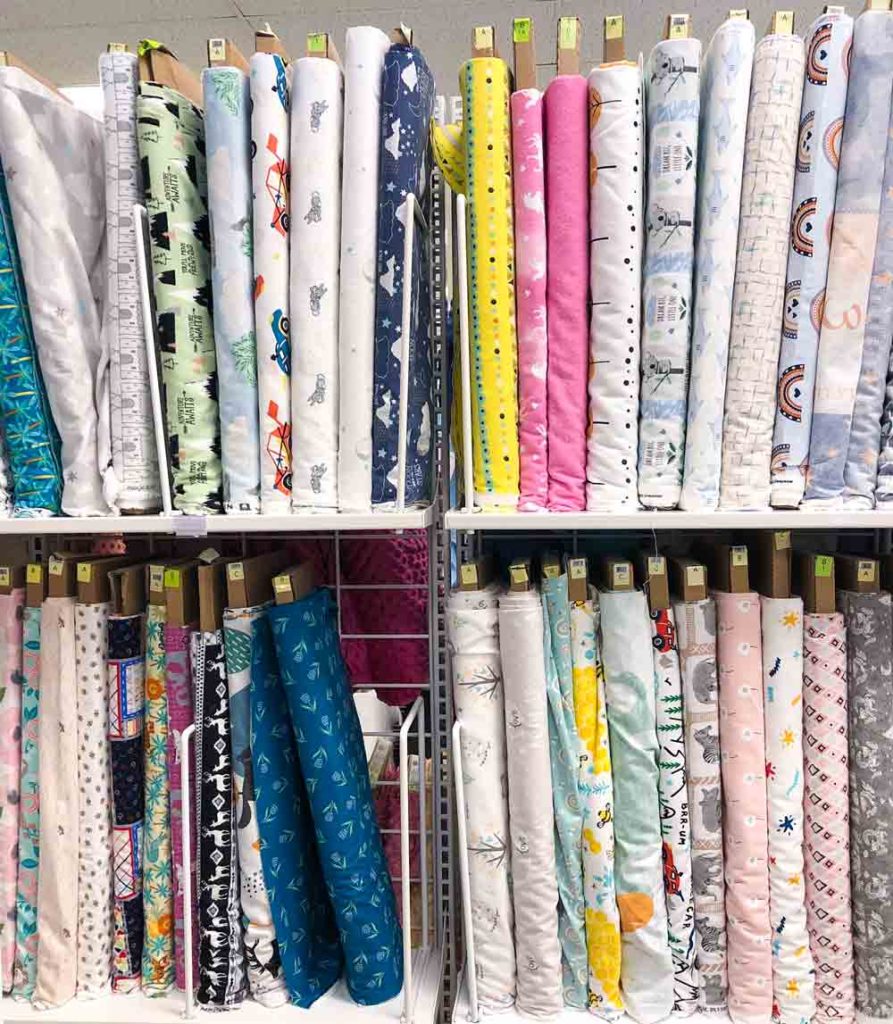
Oh my! Too many cute flannel prints to choose from!
One of the best things about flannel is that it gets softer over time. This makes it a low maintenance material that doesn’t need to be replaced often.
With that said, I personally find that the color and prints on flannels do fade over time (sad!). I’ve read online that washing cotton flannels with warm or cold water (not hot) prevents this, but I’ve never tried myself. Oh well, a baby bib’s are only useful for a season, so this isn’t too big of a deal.
Jersey Knit
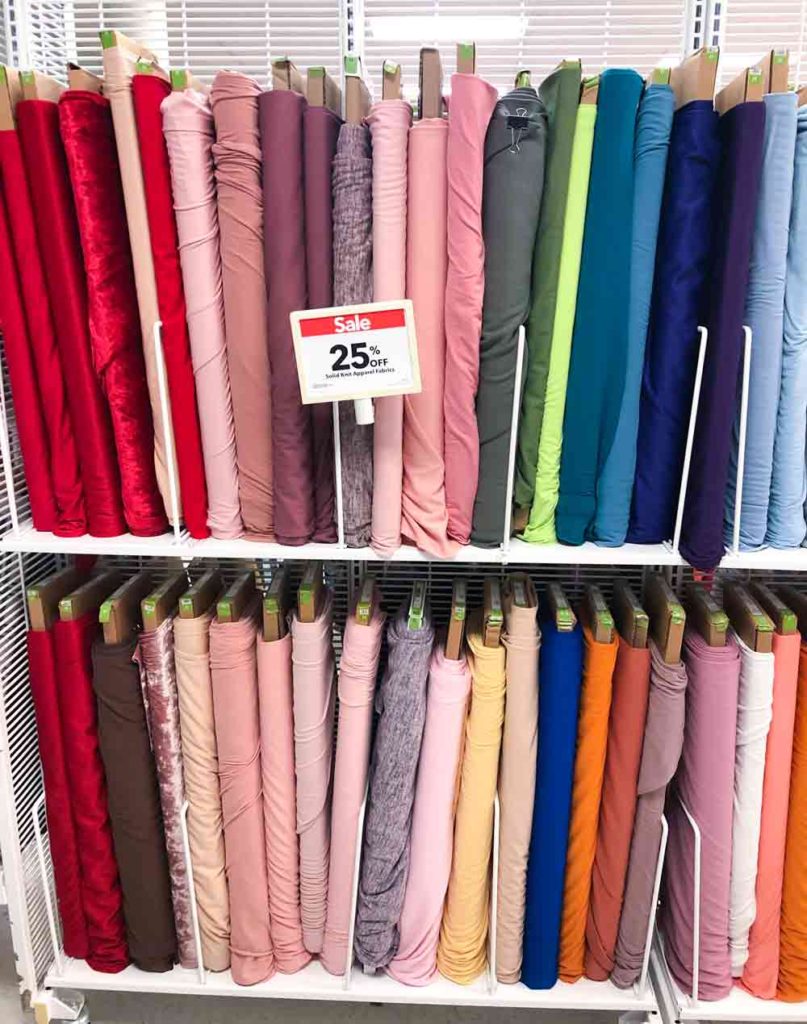
Jersey Knits come in a variety of shades and colors
Another good fabric for baby bibs is Jersey Knits. Jersey Knits are soft, durable in the machine, and doesn’t wrinkle easily because seriously, who has time to iron a bib?
Also, Jersey knits retain color well which is great for repeated washings. Additionally, they tend to be thicker than other types of knits. This results in a sturdier bib that retains its shape better when worn.
When picking out Jersey knit fabrics, try to choose a one that has a high percentage of cotton (90% or more) as this will make it more absorbent as well.
A side note: if you’ve never worked with knits before, they take a little getting used to in sewing. Also, different knits have different elasticity so you’ll have to adjust your sewing to each one accordingly. But don’t be deterred as it really isn’t that hard! For more information on sewing with knits check out this post.
Fabric Choices for Bottom Layer of Bibs:
Terry Cloth
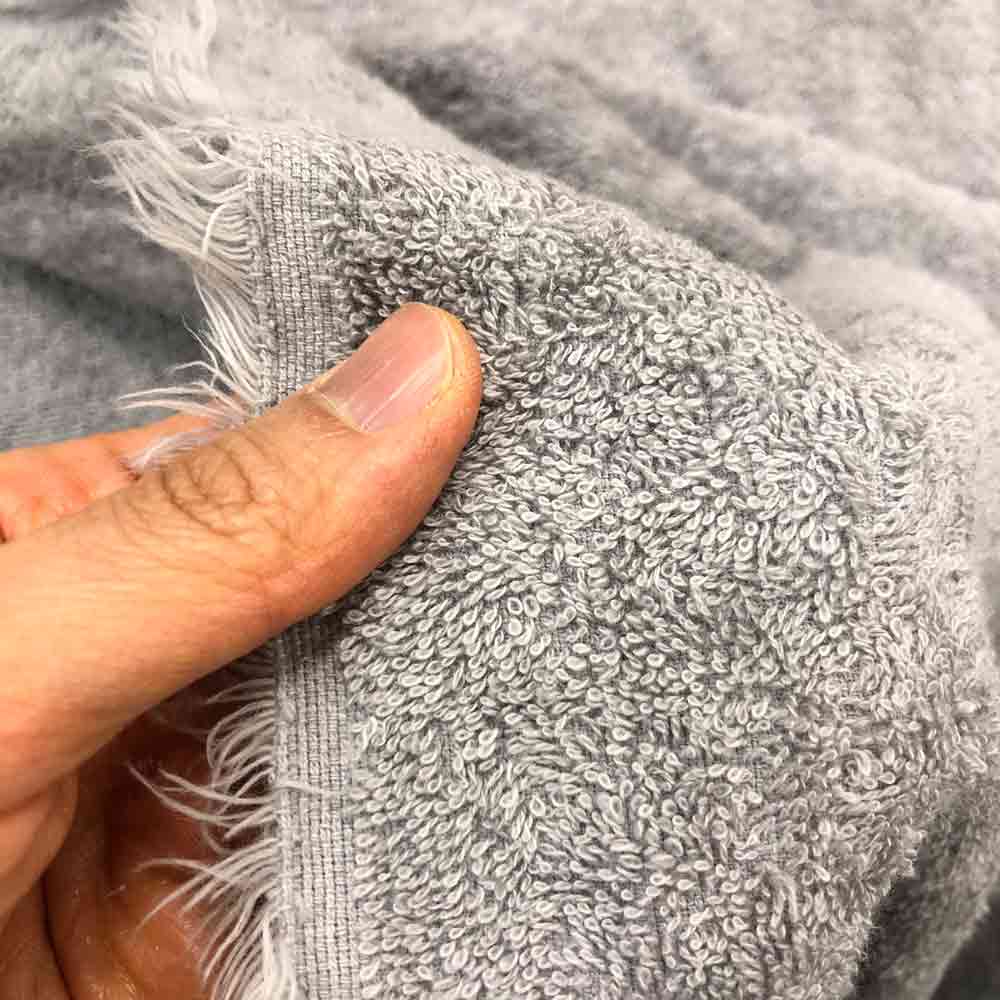
Tons of tiny loops in Terrycloth make it ideal for mopping up wetness
Terrycloth, also known as terry toweling, is what I would call “towel fabric” (for lack of better word). It is a very absorbent fabric due to the multitude of cotton loops that act like mini sponges every time your baby has a spill.
Additionally, it is a super durable fabric that stands up under repeated use and washings, which is great for bibs. Terry cloth is also very low maintenance and doesn’t need to be ironed (hurray!)
Terry cloths are available in a variety of colors and weights. For all my bibs, I like this terry cloth because it is light weight and absorbent. Unless your baby just decides to pours water or milk all over themselves, this fabric will protect normal amounts of spills from the clothes underneath.
On the flip side, terrycloth sheds A LOT when you cut it, leaving annoying little bits of fabric EVERYWHERE.
When I make bibs in bulk, I first like to cut out all the terrycloth pieces in one sitting. Next, I proceed to clean up my work area before moving on to anything else. Otherwise, the little bits of terrycloth will stick to everything in sight…fabric, pins, your clothes, you sewing machine. Not fun!
What if I Can’t Find Terry Cloth?
If you can’t easily find terrycloth or need a very specific color, you can always purchase a towel from your local store and use that instead. Better yet, cut up an old towel for an up-cycled bib!
Just note that certain store bought towels can be very thick and extremely difficult to sew. If purchasing a towel to use as the back layer, look for one that is thin and lightweight. Some store purchased towels are labeled with their weight, usually in ounces (in the US). The lower the number, the more lightweight the towel.
I would say to use a towel no heavier than 16oz per square yard as otherwise it becomes exceedingly difficult to sew, not to mention turn to the right side!
Minky Fabric

100% Polyester Minky Fabric with a Stripes Design
Minky Fabric is also known as Plush fabric or Microfiber fabric. It is made from 100% polyester fibers and is super super soft and luxurious to the touch. (Trust me, you’re going to want to keep stroking that fabric). It’s available in various colors and prints that don’t fade with wash. Additionally, you can even find embossed ones for extra texture.
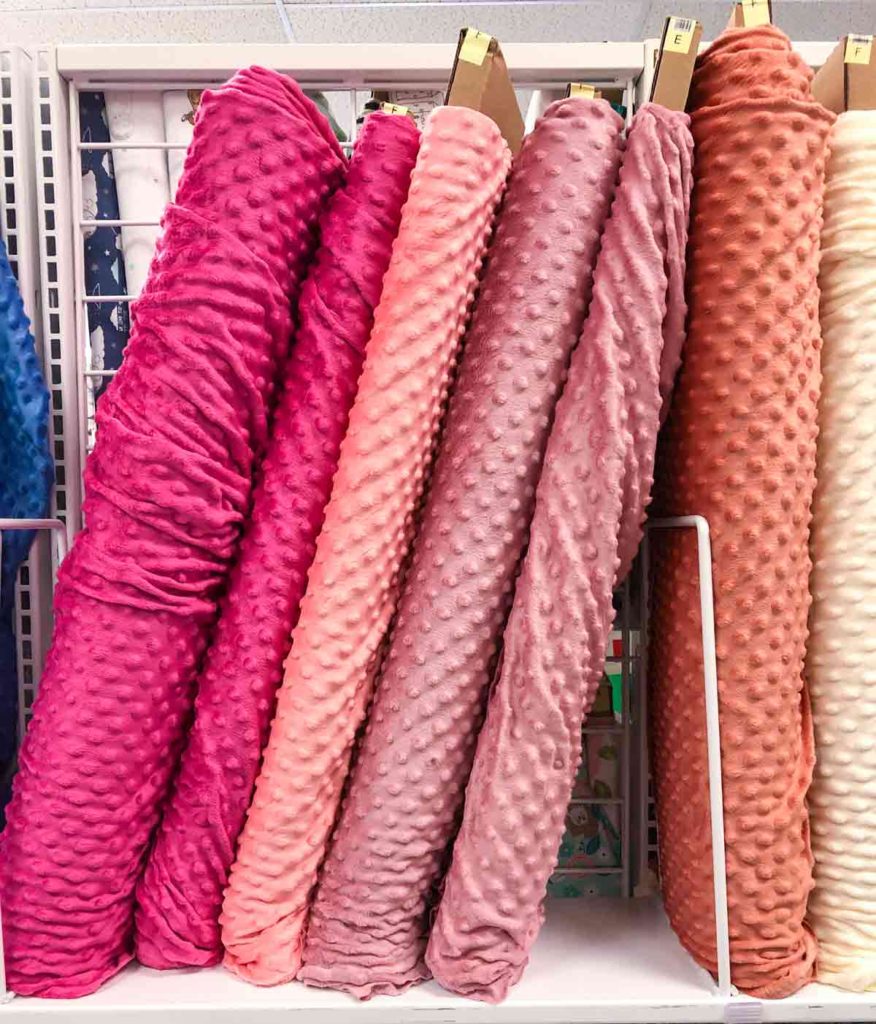
Embossed Soft and Minky Fabric in a variety of shades
Minky fabric has good absorbency, thus making it great as a bottom bib layer to protect your baby’s clothes. However, it is not as absorbent as terrycloth (that’s a hard one to). If you really like the ultra soft feel of minky as the bottom layer, find a light weight one and sandwich a light weight terry cloth as the middle layer to increase absorbency.
Just note that Minky is a warm and cuddly fabric, so I would not recommend this as a summer bib, especially if your baby is already a hot baby to begin with! However, this would make an excellent winter bib in cold climates.
Fleece
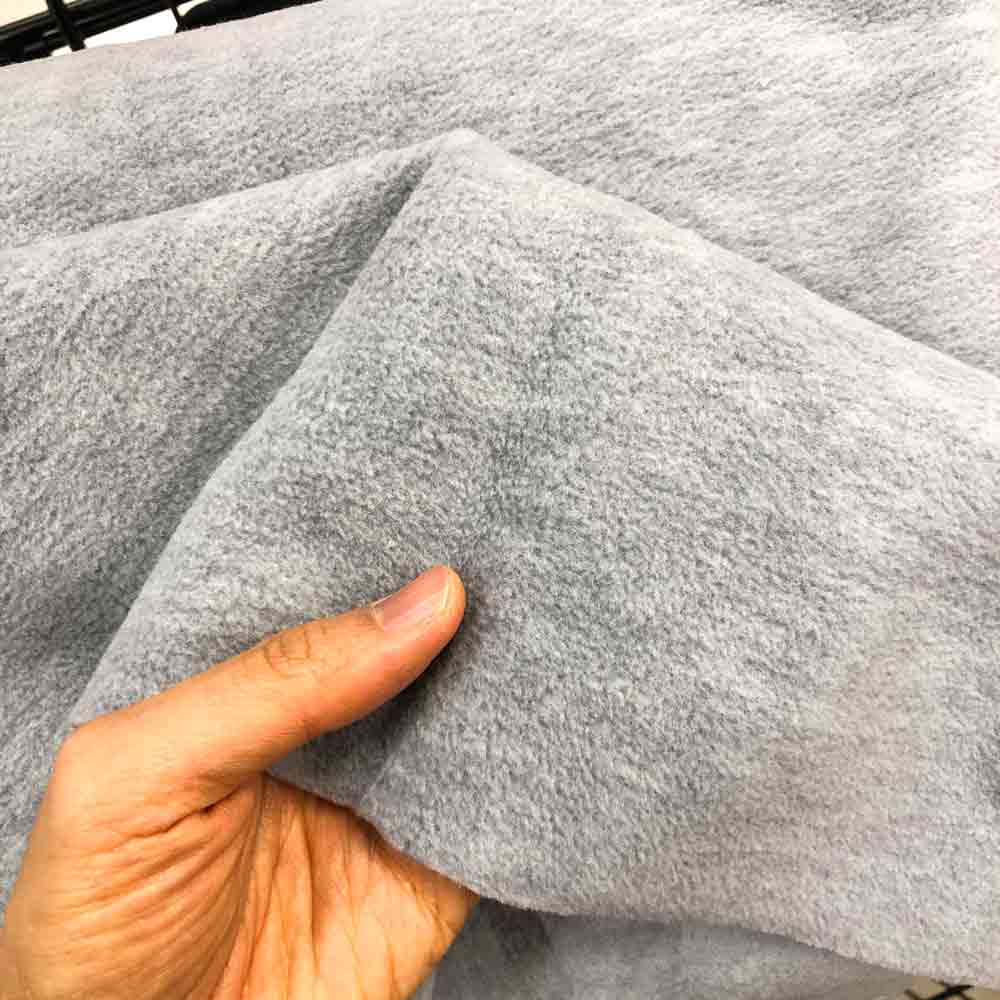
Anti-pill Fleece Fabric
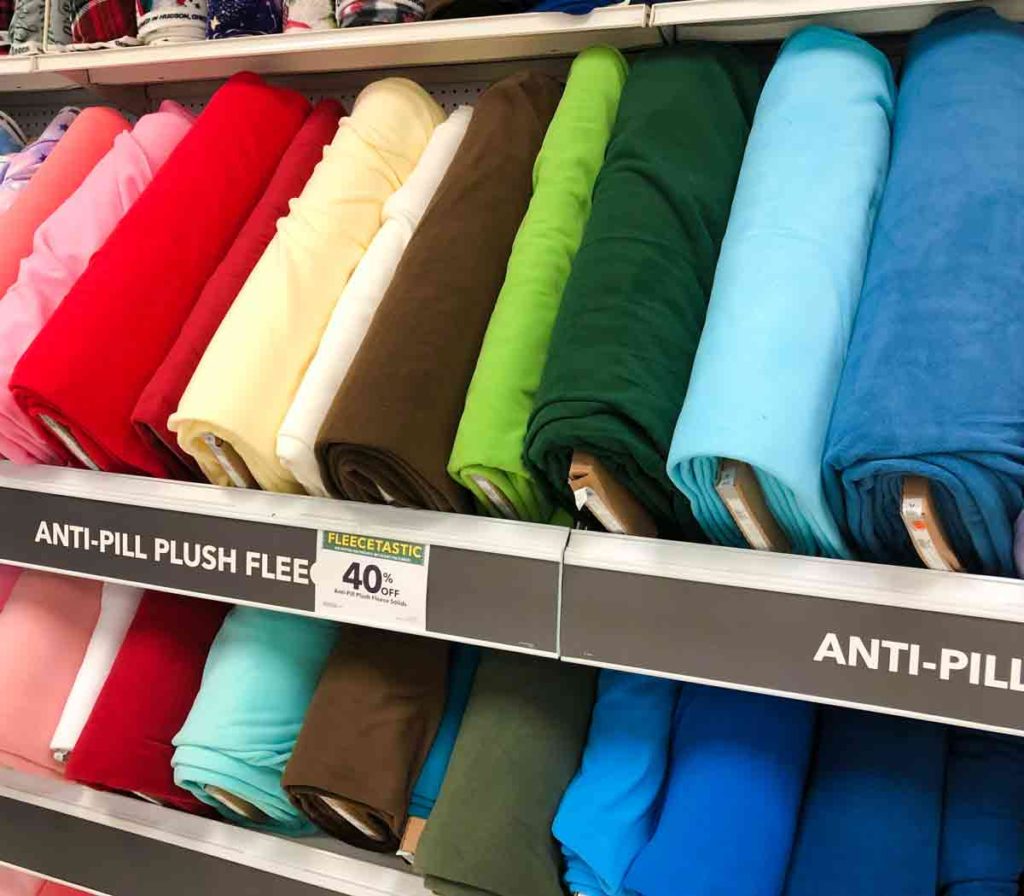
So many colors of plush fleece!
Fleece is a type of fabric made from synthetic (man-made) fibers, usually 100% polyester, or a polyester blend. It is sometimes referred to as polar fleece or polyester fleece. It is readily available in different styles and colors and also very budget friendly.
While fleece is not waterproof, it does provide some barrier to prevent spillage from seeping onto your baby’s clothes.
Generally speaking, fleece fabric is used for winter wear as it is very warm. Thus, it’s suitable for winter bibs that your baby will wear outdoors. Babies may find a fleece bib to be too hot in a heated room or on hot days.
Also note that fleece is not ultra soft or comfortable compared to the fabric options already mentioned. As a result, direct skin contact may irritate babies with sensitive skin.
Microfleece
Microfleece is a type of light weight fleece fabric that is much softer and thinner than regular polar fleece. Think of it as a higher end fleece fabric, but still very affordable.
By definition, fleece fabric that weighs 200 GSM (grams per square meter) or less is considered a microfleece. It’s a good fabric to prevent wetness from soaking through the bib.
Polyurethane Laminated Knit Fabric (PUL)
PUL is an excellent fabric choice if you want a bib that acts as a barrier to protects baby’s clothes versus a bib that’s merely absorbent. The material is lightweight and breathable so that it can be worn by babies for extended periods of time without making them feel hot.
Additionally, PUL is very durable and can be washed in hot water and dried with heat. It is also flexible and an easy fabric to sew.
PUL fabrics are available in a variety of colors and pattern (although not nearly as extensive as flannels/cottons). However, this isn’t too big of a deal if you are using it as the bottom layer. You might be able to find some at your local fabric store, but more selection is readily available online.
Bamboo
Fabrics made with bamboo have a soft, smooth and luxurious feel. It is strong and durable to wash and also resistant to abrasions. Bamboo is an excellent fabric for babies with sensitive skin as they are hypoallergenic. This makes it a great choice for babies who develop allergies to other types of bibs.
Unfortunately, bamboo fabrics are not so easy to find at fabric stores and usually only available online. They also don’t come in as many colors and prints as the other fabrics listed above. However, it’s a great fabric to use as the bottom layer. If you can find a cute bamboo fabric, use that as the top layer!
What fabric should i use to make baby bibs?
With so many good fabric options out there, there really isn’t a right or wrong answer for what is the best fabric choice. It all depends on what is the main purpose of your bib.
Absorbent Baby Bibs
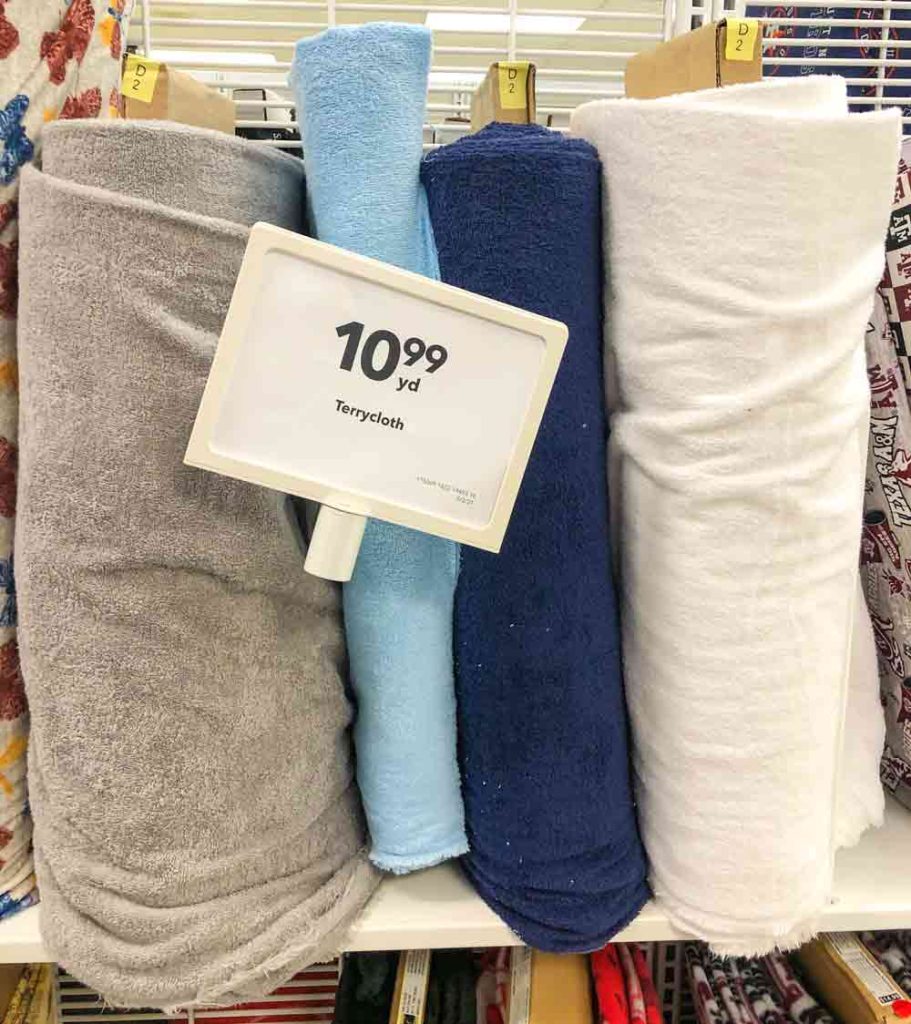
If you want to make absorbent baby bibs, Terry Cloth will be your best choice. For even greater absorbency to mop up spillage (or you have a heavy drooler), choose a medium to heavy weight terrycloth. You can also use terrycloth for both the top and bottom layer of the bib to increase absorption as well.
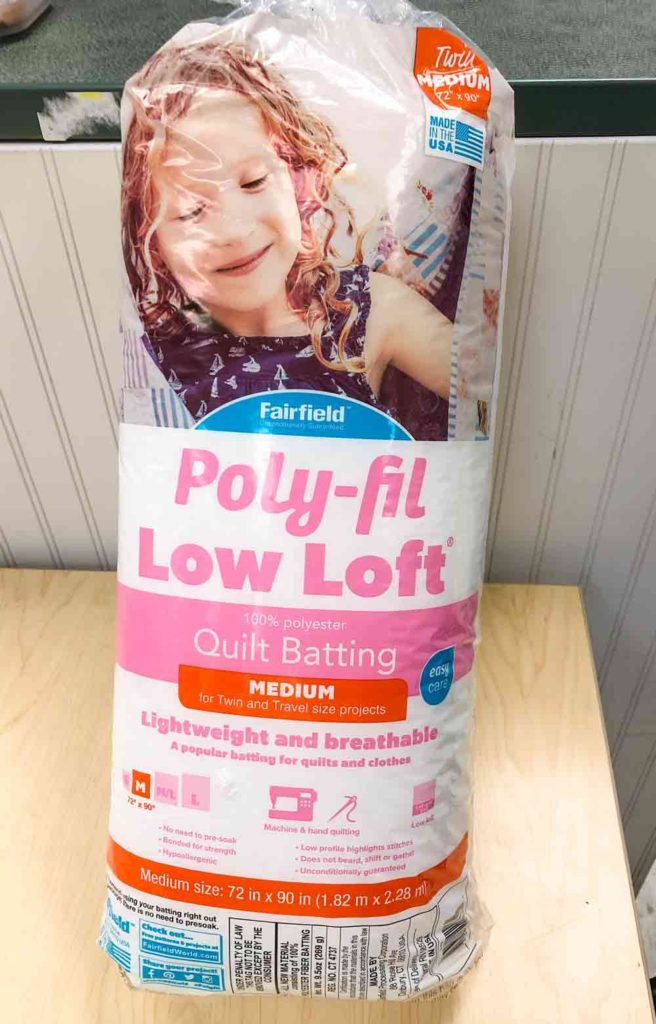
A low loft quilt batting is good for adding extra absorption to your homemade bib
Another good option for absorbent bibs is to add a layer of light-weight batting in the middle. This way you will end up with 3 layers of fabric: Cotton (top), batting (middle), and Terry Cloth (bottom). You can even quilt your bib for extra credit!
Barrier Bibs
If you are wanting a waterproof bib so wetness doesn’t penetrate to your baby’s clothes, then use PUL as the bottom layer. As mentioned above, PUL is a lightweight and breathable material so your baby can wear this bib for extended periods of time.
These days you can find cute prints or different colored PUL fabrics (usually for making cloth diapers). If you like the print or color, feel free to use that as the top layer of the bib as well.
Bibs for Sensitive Skin
Bamboo is the most ideal fabric choice for babies with sensitive skin. It’s hypoallergenic, soft, and comfortable. Use this as the bottom layer of the bib that contacts your baby’s skin. If you find a print that you like, use it as the top layer too!
Budget Friendly Bibs
Fleece is a budget friendly material for bib and is readily available in various colors and prints. Just note that fleece is a warm fabric so is not suitable for bibs that will be worn in warm climates.
Luxurious Bibs
Pair a cute cotton print on top with minky fabric on the bottom and you will have yourself a bib that not only looks amazing but is amazing to the touch. Minky fabric is super super soft and they even come in embossed designs to appease the pickiest mamas.
A bib made this way will look and feel so expensive, and everyone will be wondering where you got your bib.
Fashionable Bibs
If you want a fashionable bib, cotton would be your best bet! There are so many cute cotton prints out there that it will make you dizzy. Not to mention that cotton is available in every color and shade imaginable.
Mix and match colors and prints for a color-blocked bib or add extra details and designs on top of the bib. The possibilities are endless.
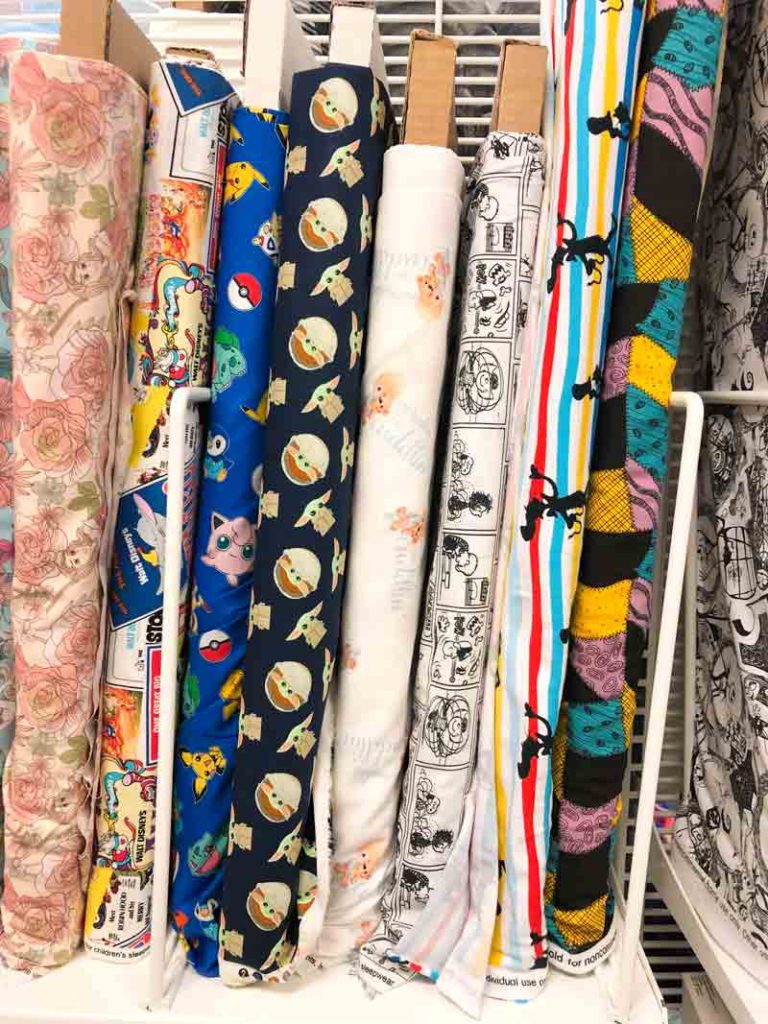
Look at these adorable cotton prints!
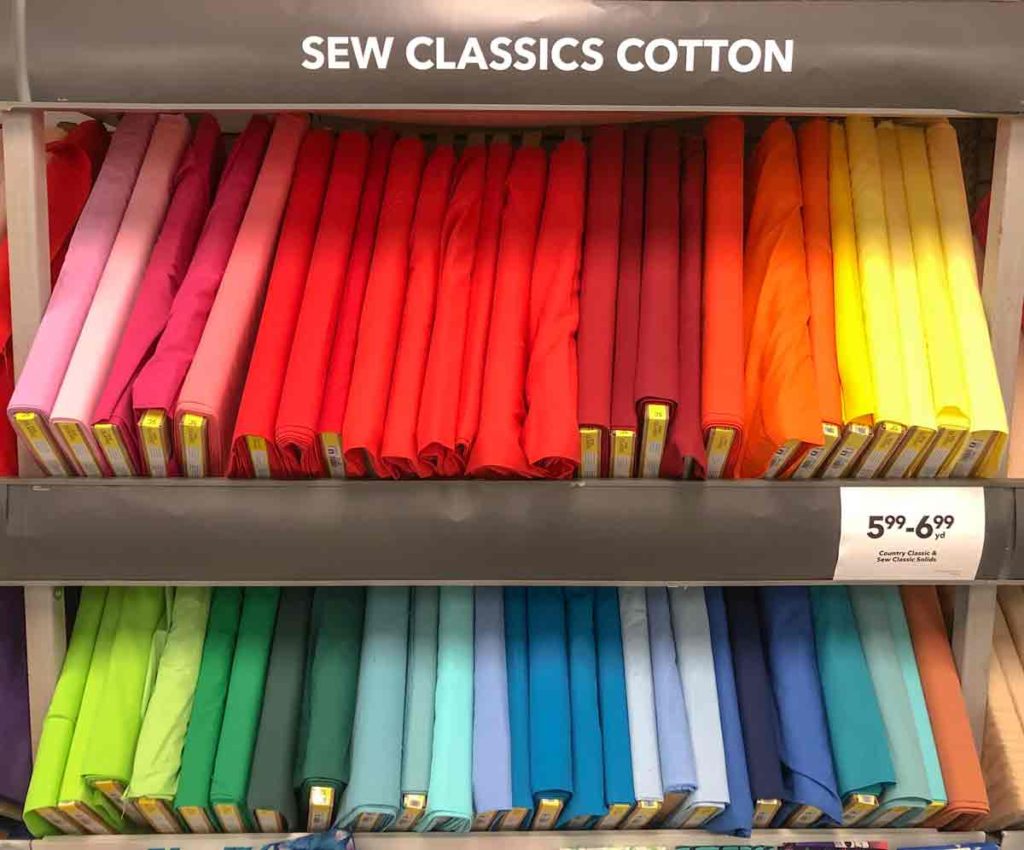
Cotton fabrics are easy to find and come in every shade under the sun
Fun Bibs
These days, bandana bibs are all the rage. This bib looks like a bandana but is functionally a bib. This way, you can disguise your baby to look like they are wearing an accessory versus an actual bib.
Check out this easy tutorial for How to Make a Bandana Bib (comes with free pattern).
There are also fun costume bibs. The bibs are designed to make the baby look like they are wearing different outfits such as a tuxedo, a policeman uniform, a firemen, etc.
Check out this easy tutorial for How to Make a Cute Towel Bib with a Collar (free pattern).
My Favorite Fabrics for Bibs
With all that said, my favorite combination of fabrics to use for baby bibs is the following:
- Front Fabric: 100% Cotton Fabric or Jersey Knit
- Back Fabric: Terry Cloth.
In terms of ease of use, I much prefer Jersey Knit over 100% Woven Cotton. This is because the Jersey knit bibs did not wrinkle in the wash whereas woven cotton (especially thin cotton) wrinkled quite a bit! This isn’t really a big deal because you can easily press it out. But honestly, which busy mama has time to iron bibs?
However, it was much easier to find cute cotton prints that are just screaming to be made into bibs versus jersey knit prints. For this reason, I definitely made a lot more cotton bibs than jersey knit bibs. Ha, vanity.
Aside from the wrinkling issue, these bibs are great to mop up spit-ups, drools, leftover food bits, you-name-it! It was like my baby constantly wore a towel around his neck for me to quickly clean up his messes. We had so many of these bibs that sometimes it became an “emergency rag” to clean spills and other things. Ha!
So there you have it! I hope you found this article helpful for choosing the best fabric to make baby bibs. Let me know in the comments if you have a favorite combination of fabrics you like use. Happy Sewing!
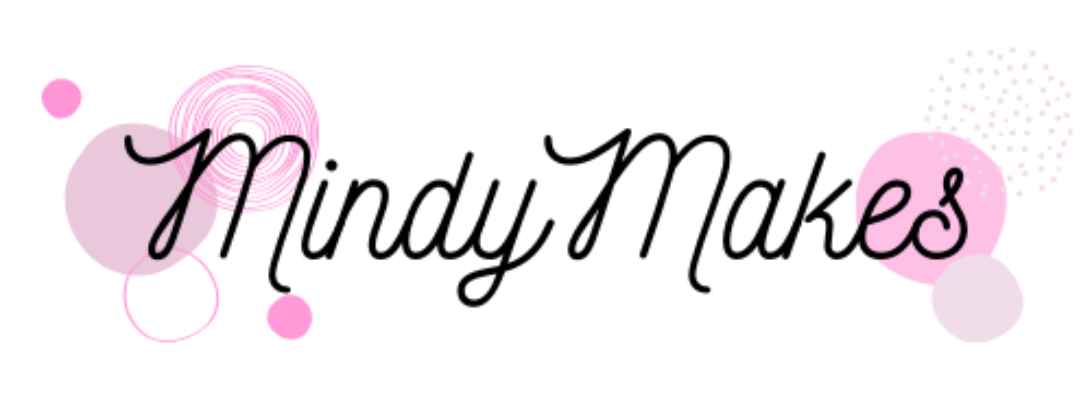
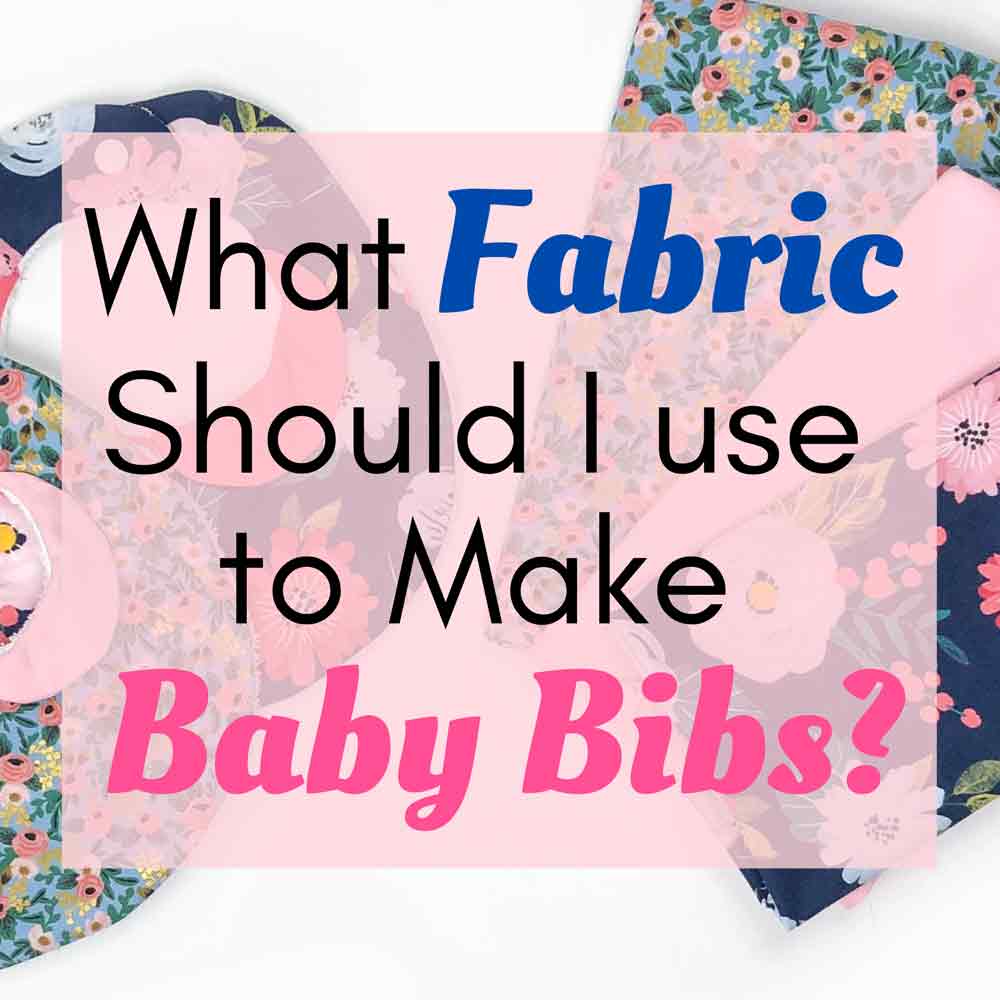
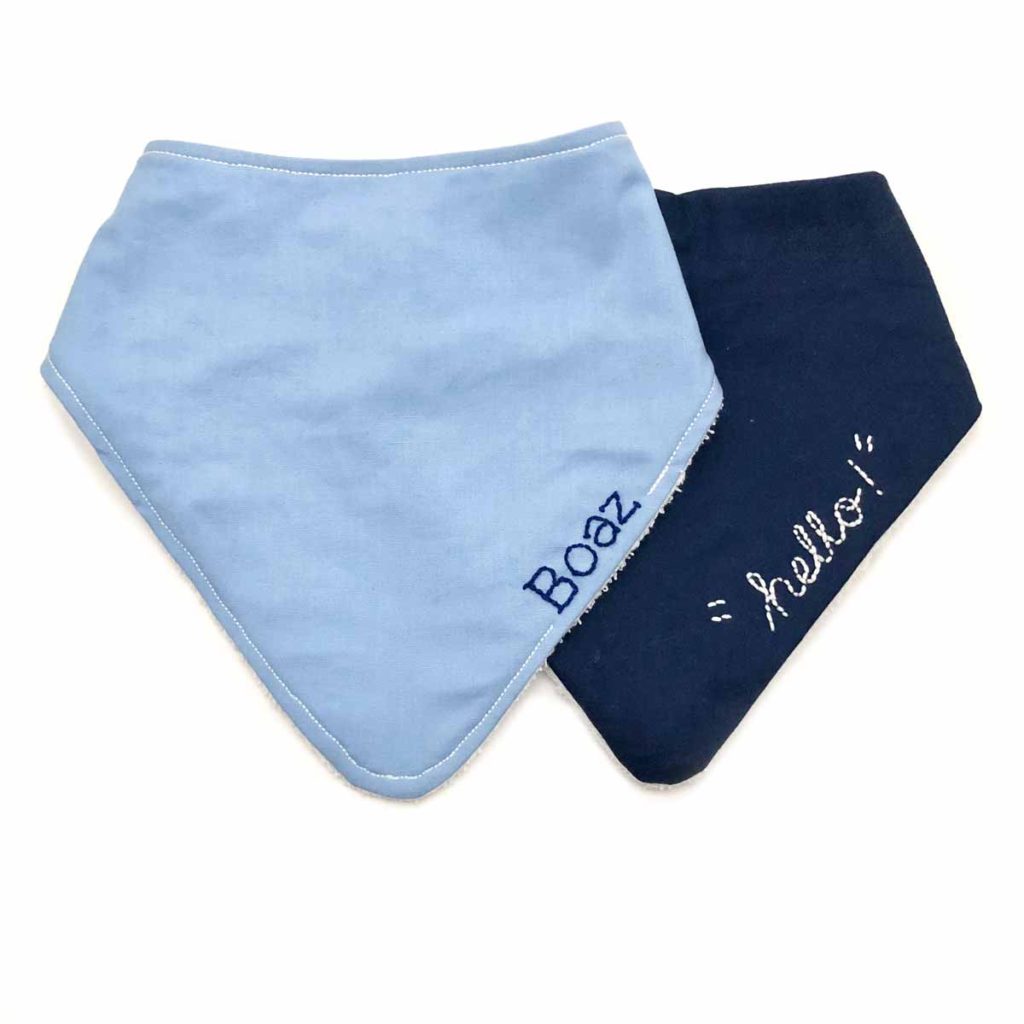
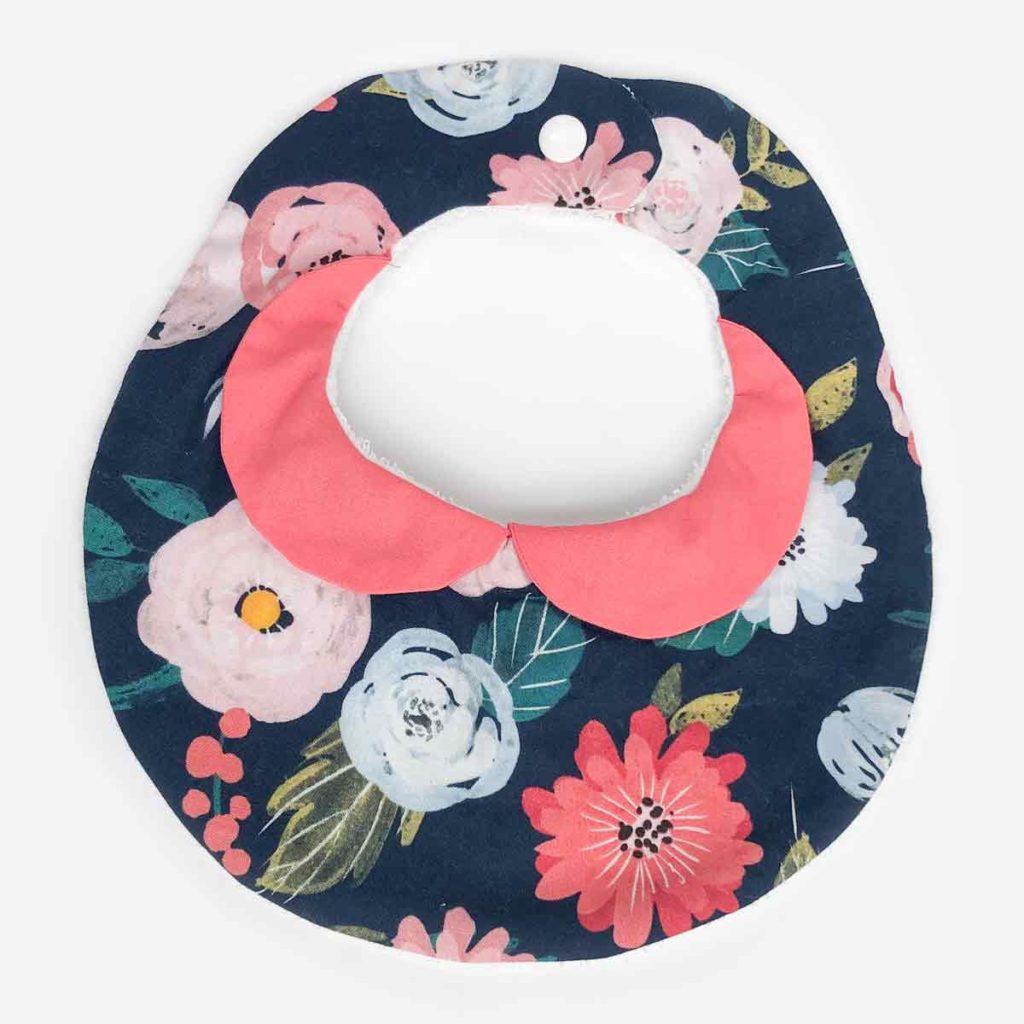
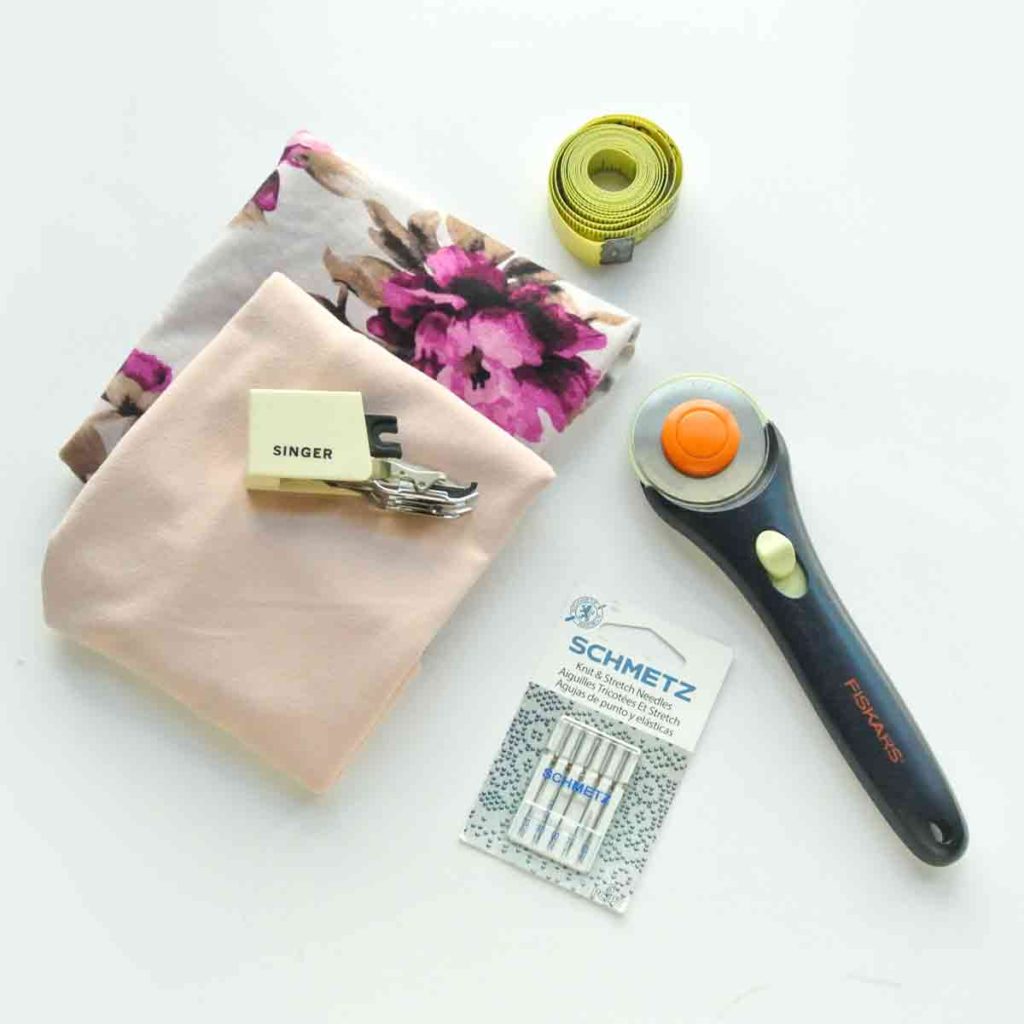
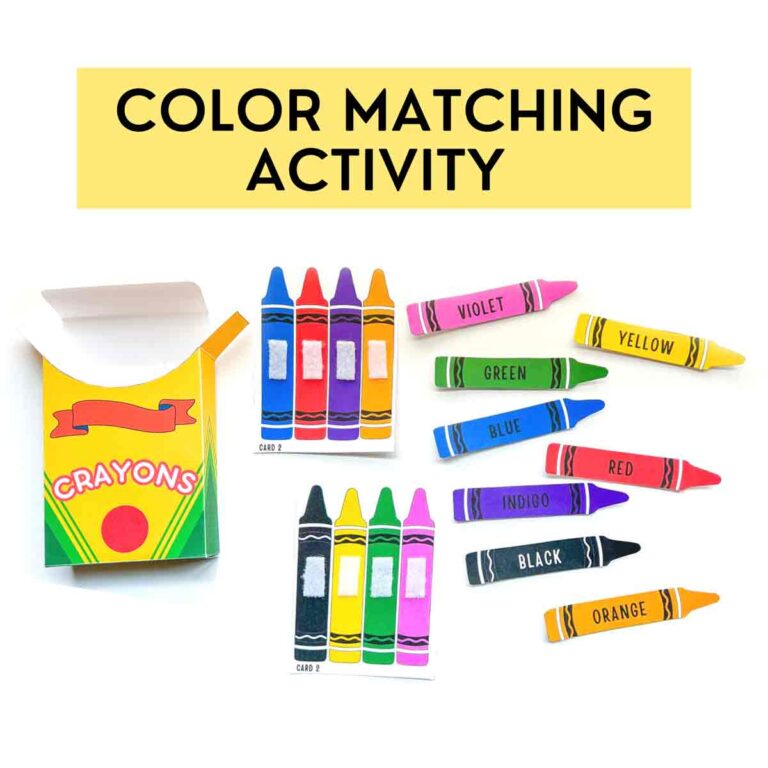
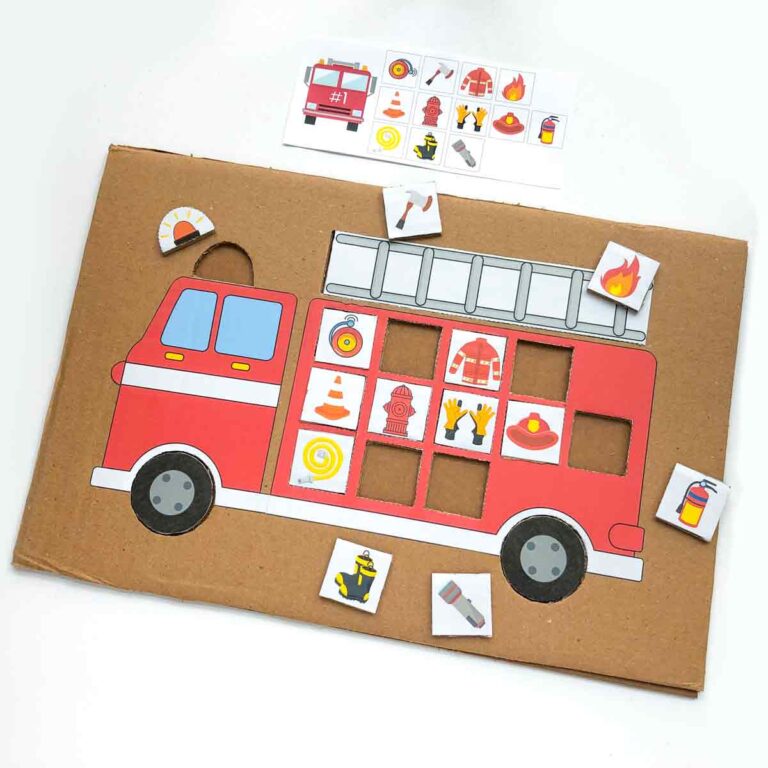
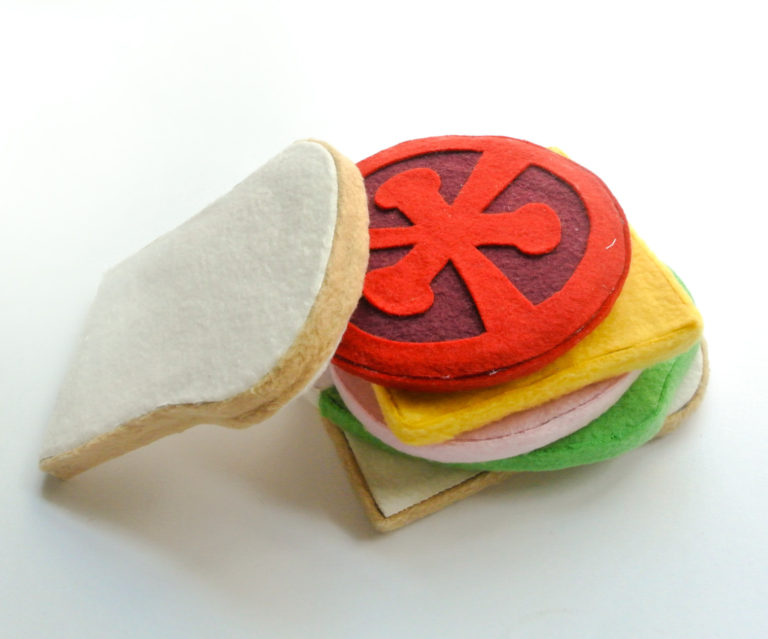
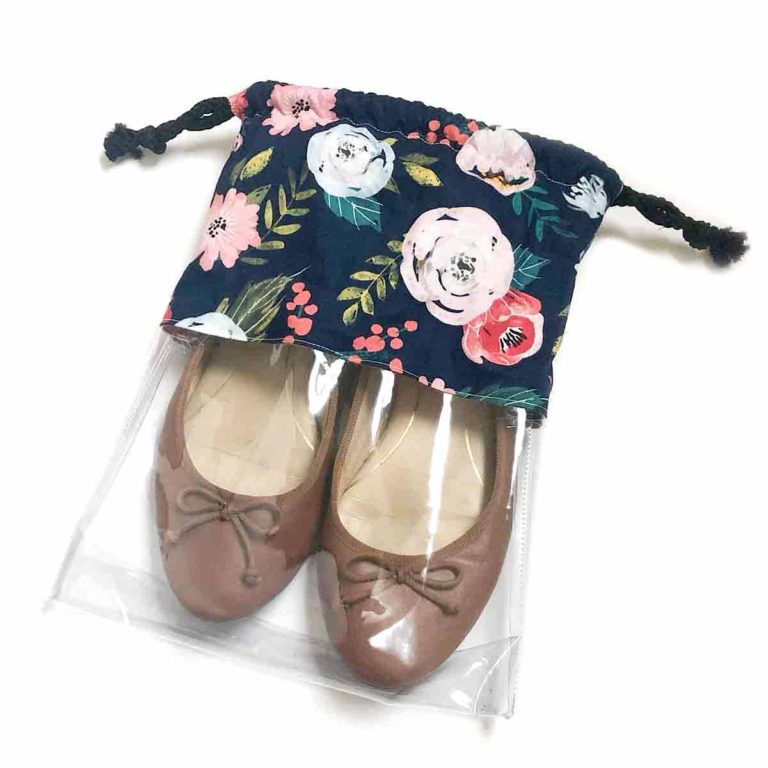
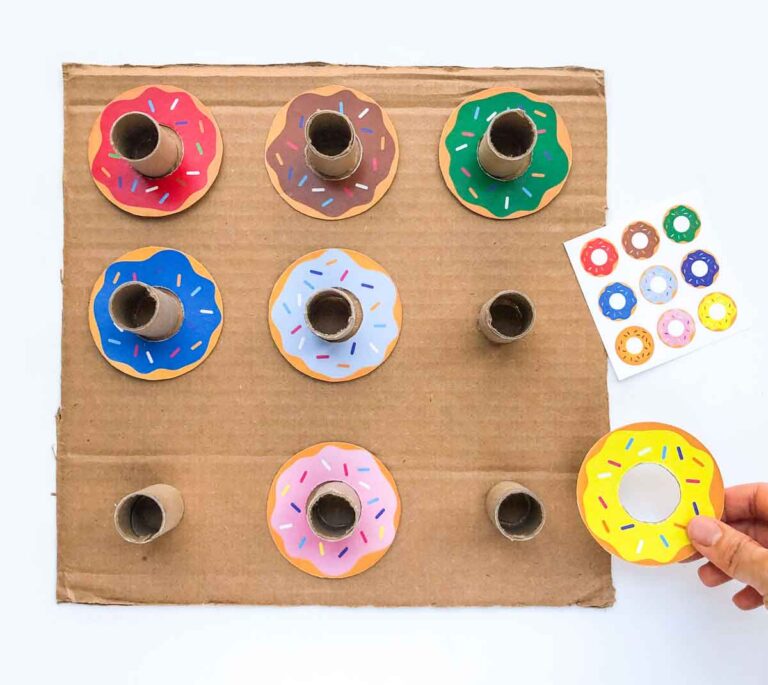
Hi!! I’m trying to make the perfect bib for my baby. I’m trying to make an absorbent yet waterproof bib, where it wouldn’t leak to the other side onto her clothes. (This happen to be a big issue for all the bibs I’ve purchased) I was wondering would you think this combo would work? Top layer: cotton , middle layer: light batting bottom/back layer: pul fabric.
Thank you!
Hi Annie, yes, adding a PUL fabric on the back (the side facing the clothes) would be perfect! if you want to make it extra absorbent, you could also use a thick towel as the middle layer. Just note that it would make the bib a bit bulky, but that should prevent any leakage onto the clothes. Let me know what you end up deciding to do and how it turns out!
I’m making waterproof bibs for a drooly baby and have tried PUL, but it does let moisture through. I sm now using ripstop for a liner and love it. I put a flannel layer on the back and a couple of layers of flannel on top with ripstop in-between. Absolutely no leaking through. And ripstop is lightweight. Babygoes through many a day and clothes stay dry!